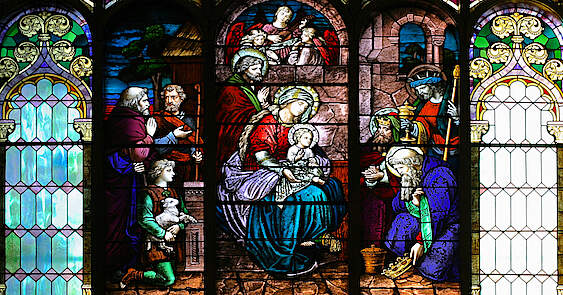
The New Testament provides very little, if any, information about the life of Mary and Joseph before the Annunciation, nor the nature of their relationship before that event, or about the way they lived together afterwards. We only know that Mary was "married" to Joseph, that they were not yet living together, and that Joseph would soon be invited to "take Mary his wife into his home".
To find out more, we must prayerfully ask for the light of the Holy Spirit and learn from mystics and theologians. We must also be open to accept different perceptions of this mystery.
Their union of heart and soul was beyond all human experience, for it was rooted in God's decision and entirely directed towards the divine Child. The representations of the Holy Family we often see in Catholic art - a man and a woman somewhat embracing each other, a child between them - have nothing sacred about them. They are in contradiction with the mystery of the Incarnation and deeply shock our Orthodox brothers. Taking a more theologically rigorous approach, the Orthodox Christians always place Joseph at a distance from the Woman and the Child. How else can one show that he was neither Mary's concubine nor Jesus' progenitor?
Now regarding the last question: is it not troubling and even contradictory that Mary is given as an example to both consecrated and married persons?
Mary has always been seen as the model of virgins and consecrated people. But this doesn't mean that Mary and Joseph are not also the model of spouses, as a more recent tradition upholds. The feast of the Family is set as an example for us. This apparent paradox confirms that we can't reduce the incomparable mystery of Mary (and therefore of Joseph) to the level of our human experience. And no one is expected to be exactly like Mary.
Instead, we all have much to learn from her. As Queen and Mother, she has the charism to inspire and form disciples, whatever their vocation.
Father Alain Bandelier
See also: Marian Encyclopedia